I fell in love with Jackson Pollock twice.
The first time was in elementary school. My third-grade teacher decided to give the class an art lesson on “drip painting.” She basically let us fling splatters of paint across sheaths of butcher paper with our paintbrushes, camouflaging the students in rainbow, what ended up looking like an 8-year-old’s version of India’s Festival of Colors. “It’s important for the brush to not actually touch the paper,” Mrs. Lau stressed. I couldn’t believe it, I never thought about using the paintbrush like a magic wand to spool ropes of color. “This is a technique that was invented by an American artist named Jackson Pollock.”
This was also the first time I discovered that people could become famous for painting. I wanted to do that. I loved art and I appreciated how Pollock did it in a way that was unexpected and outside the lines (pun intended). Pollock was one of my first true outside-thinking iconoclasts and heroes.

The second time was years later when Ed Harris signed on to make – and star in – the Jackson Pollock biopic. The movie was deserving of its accolades, but it drove me deeper into Pollock’s life and legacy, the troubled painter’s philosophy on art, and his reexamination of established practice. His questioning of the paintbrush itself and how it was to be used challenged tradition and offered new insight as to what art could be. You’d think that after centuries of artistic exploration, there’d be nothing new under the sun in terms of technique. But, pushed to the edge (both in medium and personal life), Jackson Pollock stumbled onto a new frontier. He recast painting for another generation of artists to dismantle, debate, and develop.
I can’t appreciate art without considering the artist. Pollock’s life was embroiled in chaos and addiction, and I believe it resonates throughout his work. Although Pollock was responsible for a lifetime of significant contributions, his “Drip Period” canvases are his most famous, although he only painted these for a short three years of his life. He went out on top, ceasing production on drip paintings at the height of their popularity. I’m fascinated and mystifieid by artists and designers who choose to do this with their careers. No other work in his life afterwards measured up to the drip paintings.
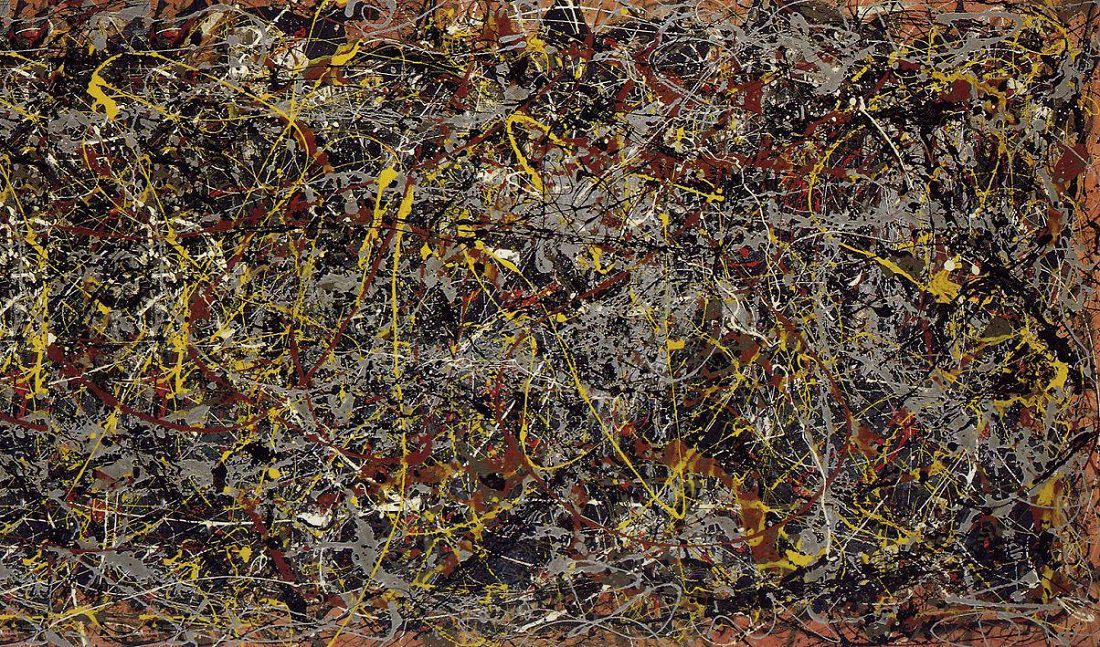
And then, there’s his wife. One thing I have learned to be true over the years in dealing with the world’s most celebrated male artists, is that there’s often a great woman behind them serving not only as cheerleader, but manager, confidante, best friend, and therapist. In Pollock’s case, the great artist Lee Krasner was also guardian angel. I can’t tell Jackson Pollock’s story without considering all that this woman did for his psyche and art. In this way, Pollock’s finest works were Krasner collaborations.
Jackson Pollock’s life ended tragically in 1956 in a drunk-driving accident. He was only 44 years old. The Hundreds continues his legacy with The Hundreds X Jackson Pollock, a collection of apparel and furniture that employs the unique splatterings that blanketed the artist’s studio floor in his Long Island home. The collaboration also includes a Modernica chair. I guess this makes the third time I’ve fallen in love with the life and art of the late, great Jackson Pollock.
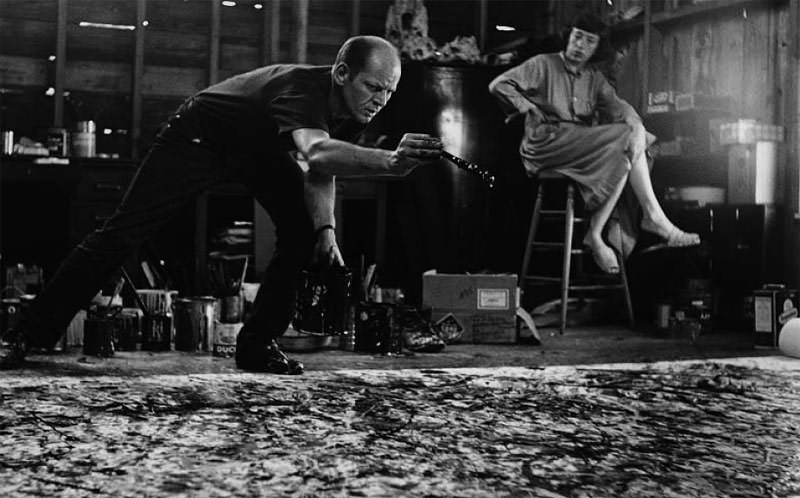
***
Shop The Hundreds X Jackson Pollock, available now in our Online Shop, flagships, and select retailers worldwide. Full stockist list below the lookbook.
A detail from Pollock’s paint-splattered studio floor appears as a graphic element throughout The Hundreds collection, which includes a canvas work jacket, a series of printed T-shirts, headwear, a skateboard deck, an ash tray, shorts, and a puzzle. Highlights include a Modernica fiberglass shell chair, printed with Jackson Pollock’s studio floor all-over graphic.
A portion of the proceeds from the sale of this product supports the Pollock-Krasner House and Study Center, the home and studio of internationally renowned Abstract Expressionist painter Jackson Pollock (1912-1956) and a project of the Stony Brook Foundation. The design is a detail of his paint-spattered studio floor. For more information, visit www.pkhouse.org.
Lookbook shot by Robb Klassen.
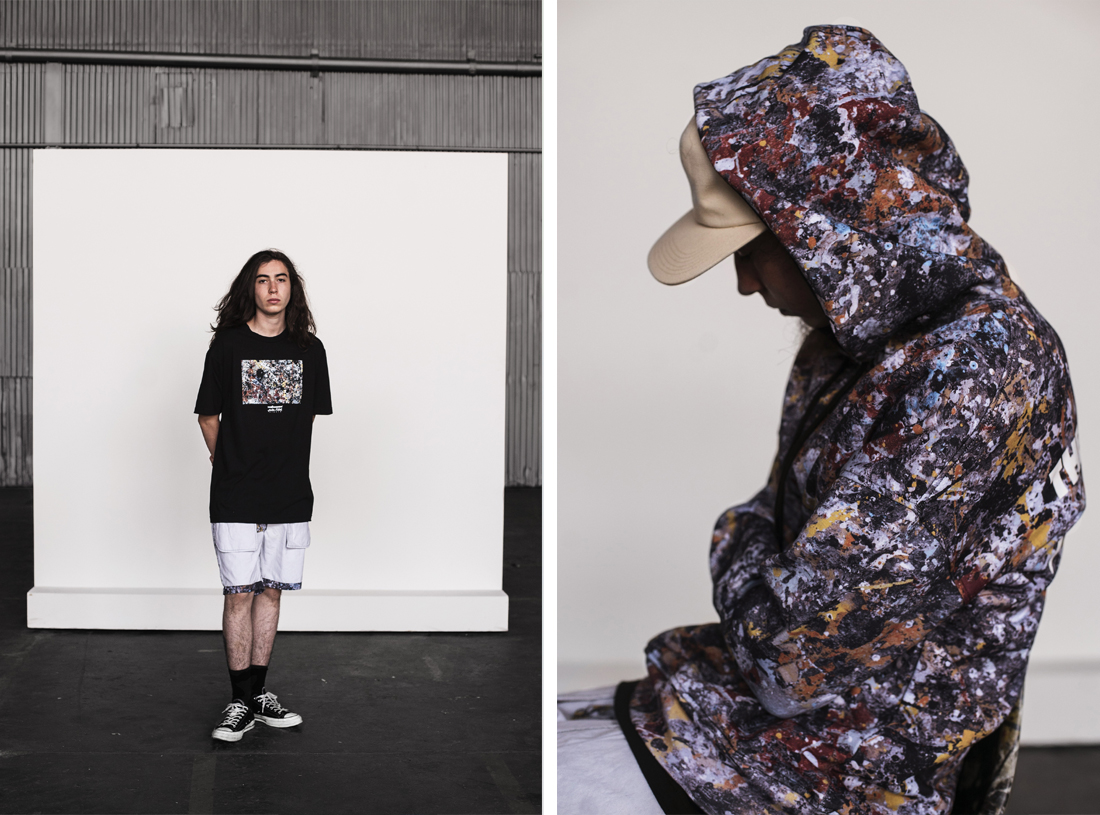
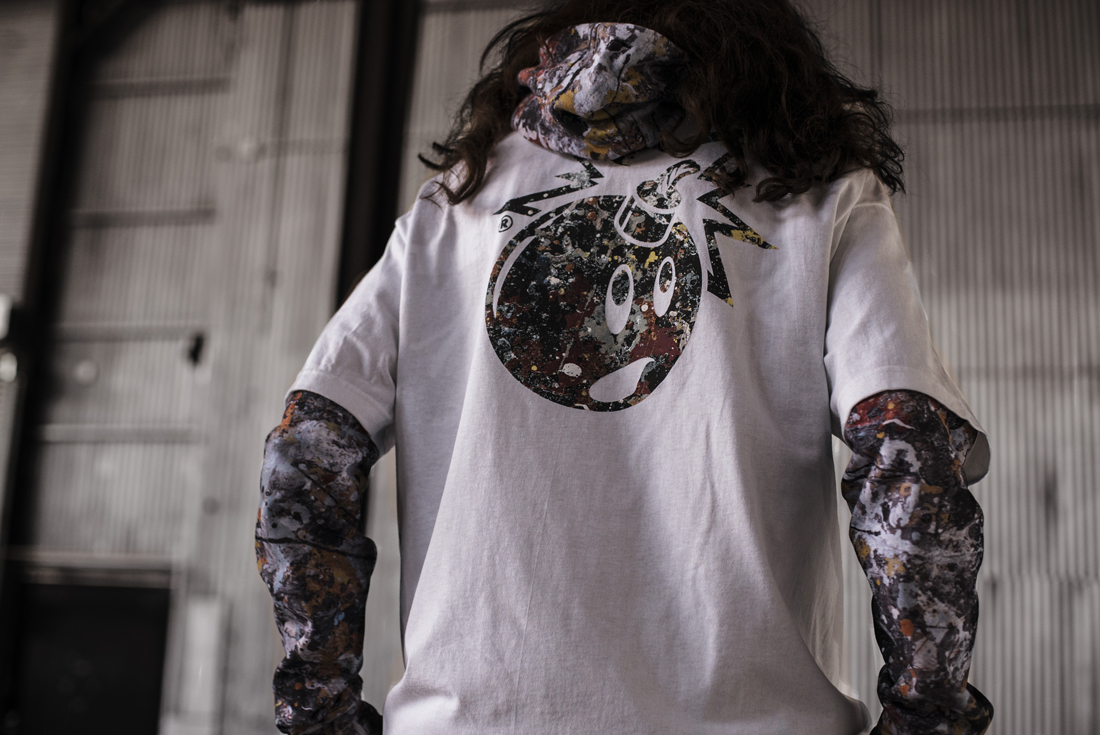
Regarded as the “greatest living painter” during his lifetime, Jackson Pollock spearheaded the Abstract Expressionist movement by developing an energetic, radical style that changed the way we think about art today. The germinal American painter electrified the art world in the mid-1940s with his “drip” paintings—refusing to paint on an upright surface, as most had done before him, explaining, “This way I can walk around it, work from the four sides and literally be in the painting.” This style of physical “action painting” altered the course of modern art, influencing multiple movements and people, including our co-founder, Bobby Hundreds.
“I want to express my feelings, not illustrate them.” -Jackson Pollock
Pollock and his wife, the painter Lee Krasner, moved from New York City to a rural homestead in East Hampton, New York in 1945. He painted his most famous all-over abstractions on the floor of a small barn on the property. The building was winterized in 1953, and the floor was covered with Masonite. When the property became a museum—the Pollock-Krasner House and Study Center—the Masonite was removed to reveal the brilliant colors and dynamic gestures that spilled over the edges of his action paintings.

“I have no fear of making changes… the painting has a life of its own. I try to let it come through.” -Jackson Pollock
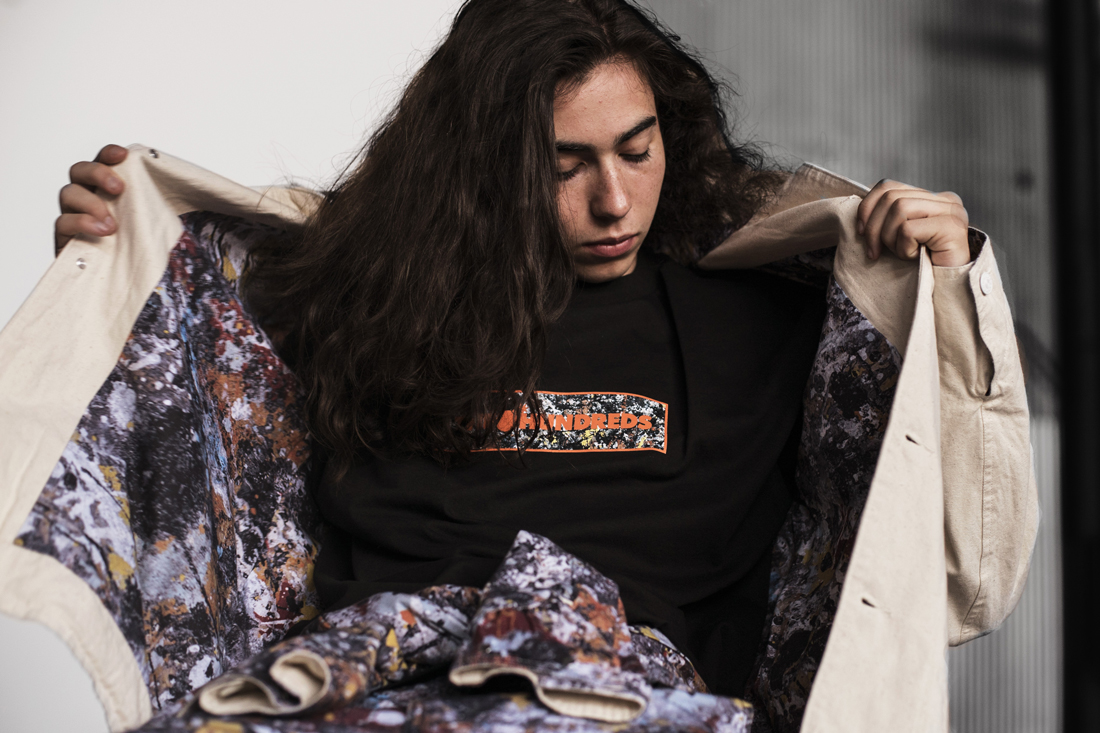


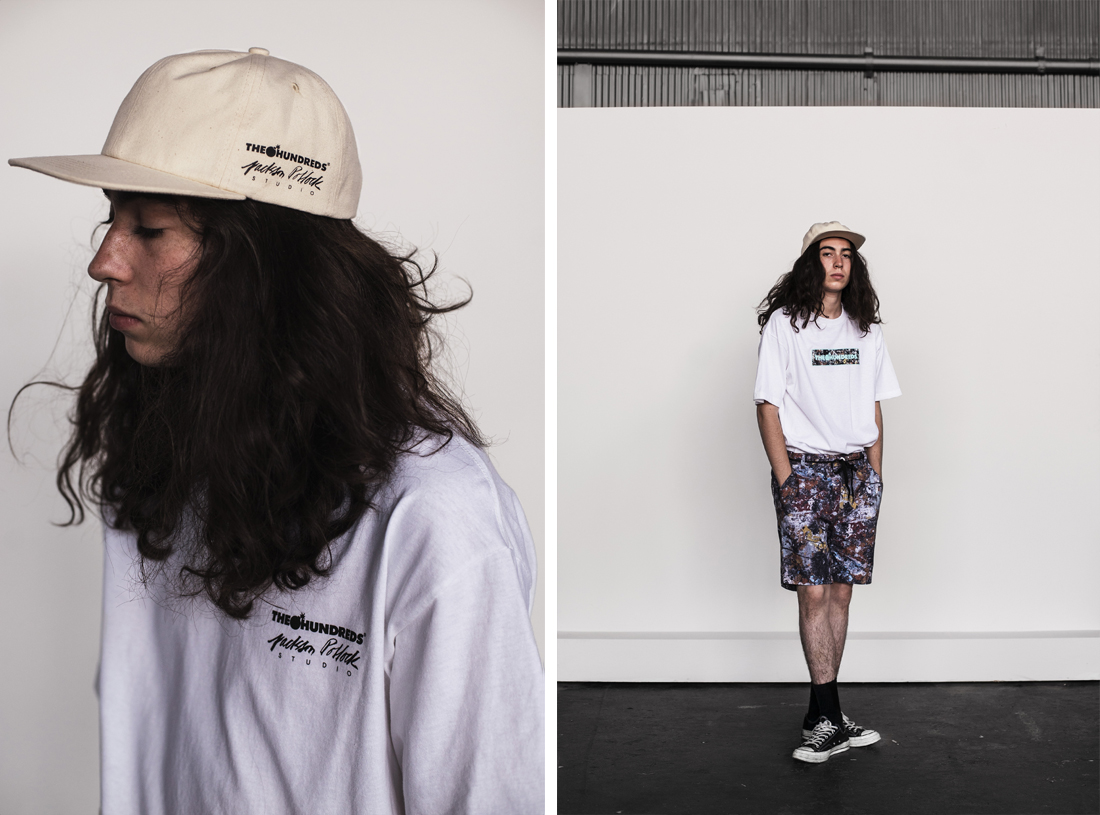





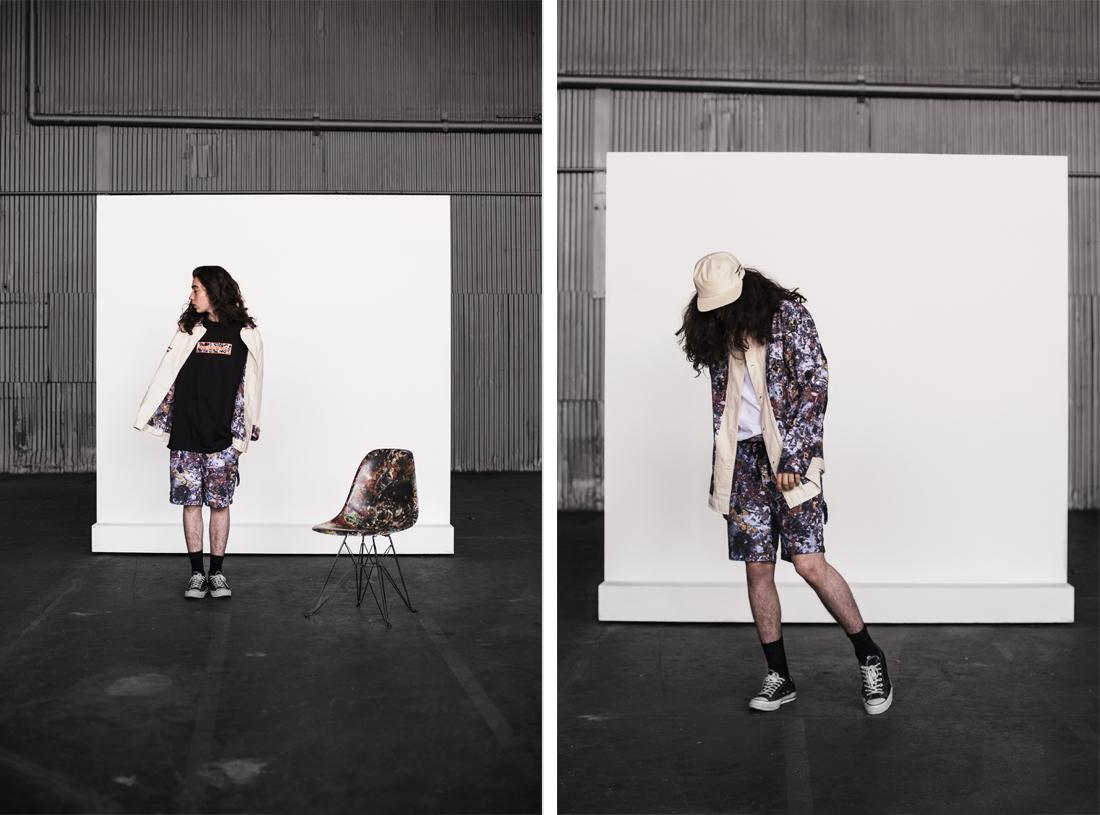
***
Select retailers carrying The Hundreds X Jackson Pollock:
Domestic
Badfish Clothing (San Pedro, CA)
Billion Creation (Chula Vista, CA)
The Edition Boutique, (Miami, FL)
Threads on Carson (Pittsburgh, PA)
Nouveau NOLA (New Orleans, LA)
Homebase Skate Shop, (Easton, PA)
Underground Skate Shop (Newark, NJ)
Fresh Rags (Pinellas Park, FL)
International
Sweden
UK
Cream, Nuneaton
Flavour, Newquay
The Alternative Store, Sheffield
Germany
Japan
Naqshtraqse, Fujisawa

